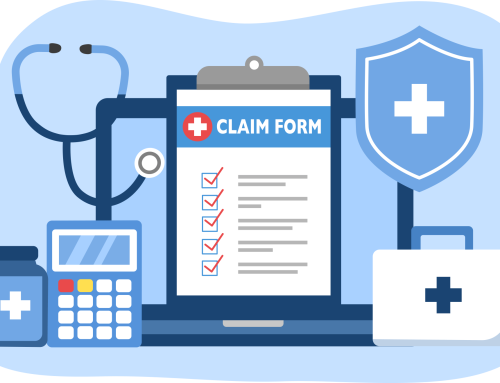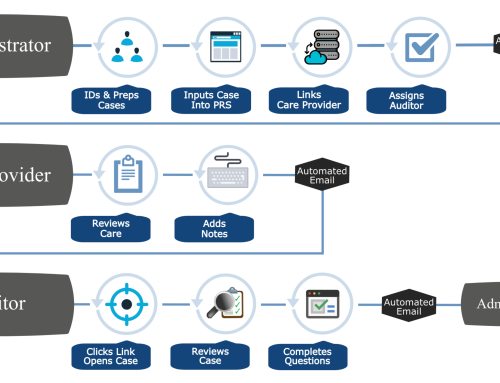 Are Urgent Care Healthcare Providers the Solution to an Overtaxed Healthcare System?
Are Urgent Care Healthcare Providers the Solution to an Overtaxed Healthcare System?
According to recent reports, pressures put on healthcare, in part by the increased healthcare coverage of individuals under the Affordable Care Act is causing a surge in the opening and utilization of Urgent Care healthcare providers across the country. The moment for increased utilization of these centers is being caused by both an increase in those who are seeking care and now have coverage, the low cost of up front care that can be paid for with cash for those who still remain without coverage, and the delay in accessing primary care providers who are flooded with new patients. Urgent Care Healthcare Providers Offer Benefits and Drawbacks According to the white paper The Case For Urgent Care between 71million and 160million individuals utilize urgent care healthcare providers in any given year. The following are some of the benefits of utilizing Urgent Care healthcare providers:
- Increased Access to Care – have you ever needed to see your primary care provider, but told that you would have to wait days for an appointment? Urgent care healthcare providers provide prompt access to services offering same day or walk in appointments, as well as availability beyond normative office hours which can be more accommodating from a patient perspective. Immediate access to care is a definite benefit to urgent care healthcare providers.
- Onsite Facilities – The majority of today’s urgent care centers offer onsite facilities which can handle things such as blood tests, x-rays, and labs. Those looking for faster answers to their healthcare concerns often opt to go to an urgent care center when their primary care provider cannot provide these services in-house. In house facilities also eliminate the need for patients to have to be referred to another facility and can streamline billing and payment.
- Cost Transparency – cost transparency, especially for the uninsured or under-insured can hold big appeal when it comes to Urgent Care healthcare providers. Patients are notified at the time of appointment what the cost will be, insurance verification and approval is streamlined, and those paying for cash reimburse the provider at the time of the visit keeping internal costs down and eliminating billing confusion in the future. While primary care providers and hospitals are making strides toward improving cost transparency, urgent care healthcare providers are already at the forefront of this movement, which is appealing to a variety of patient demographics.
- Savings over ER Visits – Emergency room visits can be costly for patients, and many who want to avoid unnecessary expenses for emergencies which may be on the cusp of primary practice severity, but are not sever enough to truly warrant a visit to the ER are opting for urgent care clinics. On average, the same services provided by the ER are typically $288-523 less when delivered in an urgent care environment vs. in the ER.
Of course, there are also a few drawbacks when it comes to receiving care at urgent care facilities:
- Lack of Comprehensive Care – Urgent care facilities are best with dealing with one or two conditions, and may be challenged to produce best outcomes for patients with complex conditions which can require specialized care over time. Though some patients, particularly those who are uninsured, may be reliant upon urgent care facilities for the bulk of their medical care which some have suggested is not as comprehensive as care provided by the primary care provider.
- Communication/Healthcare Integration – While urgent care healthcare providers are making great strides in terms of communication and healthcare integration, patients relying on urgent care for the majority of their needs may experience barriers related to an information silo. While primary care and hospitals have put in place numerous whole patient care initiatives, and worked on care collaboration throughout networks of referral practitioners, movement on the urgent care front has been slower in developing. This means that the urgent care patient may experience communication barriers between all of their healthcare providers when it comes to understanding their complete state of health and comprehensive treatment plan.
- Lack of Healthcare Relationship – For many of us there is no substitution for that doctor patient relationship with a healthcare provider who knows us and has been providing us with care over an extended period of time. This doctor patient relationship allows the patient to gain greater trust in their provider, and allows the provider to better understand total patient health over the duration of a patients life. Because of the nature of the Urgent Care healthcare facility, patients who utilize urgent care in place of a primary care practice may seen a rotating list of providers preventing the doctor patient bond from developing.
How Increased Urgent Care Centers Could be the Solution to Prompt Care Access Urgent care centers could be a solution to overcrowded providers, if used judiciously by patients, and if more steps are taken to make urgent care healthcare providers a part of primary care practices referral networks. Utilization of urgent care centers makes sense from a financial perspective if patients utilize services to avoid unnecessary emergency room admissions, and make sense from the patient perspective in terms of convenience, but need to be wrapped into the overall system of healthcare in a more uniform manner to encourage collaboration between all providers – particularly if a patient heavily utilizes urgent care.






RT @BHMHealthcare: ACA Spurs Increase in Urgent Care Healthcare Providers: Are Urgent Care Healthcare Providers the Solution to a… http:/…
RT @BHMHealthcare: ACA Spurs Increase in Urgent Care Healthcare Providers: Are Urgent Care Healthcare Providers the Solution to an… http:…
RT @BHMHealthcare: ACA Spurs Increase in Urgent Care Healthcare Providers: Are Urgent Care Healthcare Providers the Solution to a… http:/…
RT @BHMHealthcare: ACA Spurs Increase in Urgent Care Healthcare Providers: Are Urgent Care Healthcare Providers the Solution to an… http:…
RT @BHMHealthcare: ACA Spurs Increase in Urgent Care Healthcare Providers: Are Urgent Care Healthcare Providers the Solution to an… http:…
RT @BHMHealthcare: ACA Spurs Increase in Urgent Care Healthcare Providers: Are Urgent Care Healthcare Providers the Solution to a… http:/…
RT @BHMHealthcare: ACA Spurs Increase in Urgent Care Healthcare Providers: Are Urgent Care Healthcare Providers the Solution to an… http:…
RT @BHMHealthcare: ACA Spurs Increase in Urgent Care Healthcare Providers: Are Urgent Care Healthcare Providers the Solution to a… http:/…
RT @BHMHealthcare: ACA Spurs Increase in Urgent Care Healthcare Providers: Are Urgent Care Healthcare Providers the Solution to an… http:…